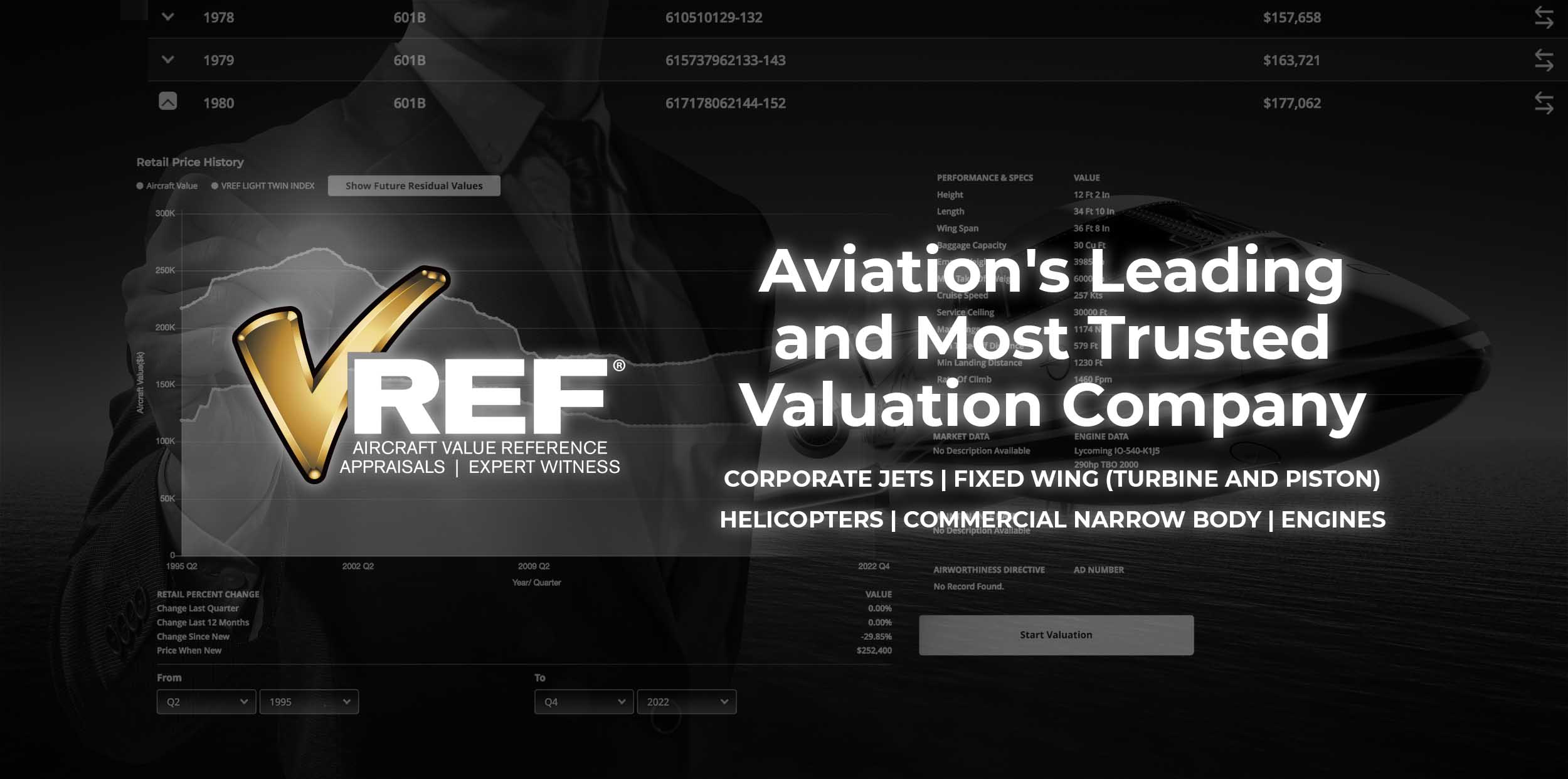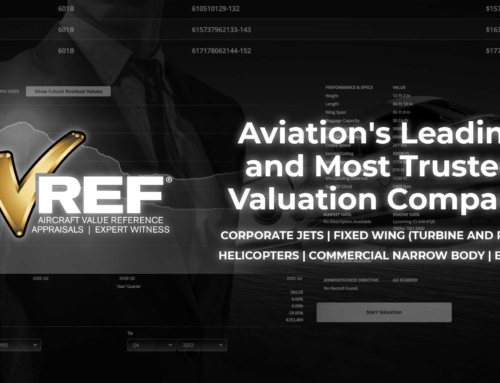According to the International Air Transport Association (IATA), Sustainable Aviation Fuel (SAF) could contribute around 65% of the reduction in emissions needed by aviation to reach net zero CO2 emissions by 2050.
So, what’s the deal with SAF, and why can’t it be used for every aircraft in the skies?
Examine the complexities of SAF in aviation and how it can affect private aircraft performance.
Explore VREF’s aircraft appraisal services.
What To Know About Sustainable Aviation Fuel & How It Affects Private Aircraft Performance
Everyone wants to know when to fully expect sustainable aviation fuel practices for individuals and businesses in private aviation. The answer, however, isn’t so cut and dry. But it does help to break down sustainable aviation fuel and how it’s typically used.
What Is Sustainable Aviation Fuel & How Does It Reduce Emissions?
SAF is a common replacement for traditional petroleum-based jet fuel. The key difference is that it’s produced from more “sustainable sources” rather than fossil fuels. SAF is also considered a “drop-in” fuel, which means it can be mixed with regular jet fuel and used in existing aircraft and infrastructure without any modifications.
SAF can be made from a variety of sustainable resources, including:
- Used cooking oil
- Agricultural waste (like corn stalks)
- Municipal solid waste (the non-food part)
- Forestry residues
Using SAF in real-life situations includes reducing landfill waste by using waste products. It also encourages using plants to produce SAF, assuming those plants absorb CO2 from the atmosphere while growing, which could further reduce the overall carbon impact.
The excitement around SAF in aviation is that it can significantly lower carbon footprint compared to traditional jet fuel. Depending on the source and production method, SAF can reduce greenhouse gas emissions by up to 80%.
Challenges Of SAF & Private Aircraft Performance
SAF is a developing solution in aviation, meaning performance issues in aircraft may arise due to its differentiating fuel properties. The main concerns when using SAF in aircraft include potential disruptions in:
- Aircraft engine efficiency and range
- Infrastructure use regarding refueling logistics
- Establishing regulatory policies and standards
Furthermore, any new technologies, processes, and systems must be developed with extensive compatibility testing and comprehensive training for aircraft operators and pilots.
Drop-In Fuel Certification Requirements
Sustainable fuel can cost 2-5 times more than regular jet fuel. This doesn’t mean a shift into SAF will never happen. It does, however, mean that there is far more for everyone – including the general public – to consider when making the switch to SAF in aviation including:
- Increased operational costs
- Profit margin pressure
- Market competitiveness challenges
- Investment in infrastructure needed
Ultimately, this could lead to higher overall operating costs for charter companies. In response, these companies may increase the hourly rental rates of their aircraft to offset the difference.
Manufacturers may also balance increasing costs by raising the base prices of all newly produced aircraft designed for Sustainable Aviation Fuel (SAF) consumption. To compare, an SAF private aircraft like the Bombardier Challenger 350 has an average asking price of $15 million.
Sustainable Aviation Fuel: Technical Certification explains the technical certification side of implementing SAF. Overall, this document highlights the importance of ensuring SAF meets safety, performance, and environmental criteria to support aviation’s transition to more sustainable fuel sources.
3 Things To Keep In Mind About SAF In Aviation
Before digging too deep into articles and blogs claiming that aviation and celebrity private jets are to blame for the world’s declining health, it’s important to look at 3 contributing factors behind adopting SAF in aviation.
- Each country is responsible for the safety oversight of its own air carriers (FAA). The Federal Aviation Administration (FAA) is a U.S. agency that regulates civil aviation and ensures safety in air travel. It sets safety standards, manages air traffic, and supports the aviation industry. However, its exact policies cannot be enforced in every country, meaning SAF standards will take time to not only implement but also enforce globally.
- Transportation emissions include emissions from cars, trucks, ships, trains, and aircraft. Aviation accounted for 2.5% of global energy-related CO2 emissions in 2023. This isn’t to say that aviation shouldn’t be concerned with its output. It is among the top industry concerns for air pollution. However, it is only one part of all transportation emissions involved.
- Not all aircraft, especially vintage or antique models, are built to use SAF. In some cases, aircraft must be modified to do so, if at all possible. Then, the FAA must approve each and every change made to the aircraft before moving forward.
Moving into the widespread use of SAF has its perks, but there are still serious challenges to overcome including high production costs and limited availability. For example, SAF is currently more expensive to produce than traditional jet fuel, emphasizing its slow adoption in aviation. However, aviation experts continue to make progress around its challenges and potential for the future.
Aviation Experts Expand Ways To Reduce Fuel Emissions Without Compromising Safety
The best way to stay informed about aviation and SAF practices is to access the same free resources online that government entities provide. A few tools to consider for plans for future progress in reducing aviation fuel emissions:
U.S. Department Of Transportation
- 2024 United States Aviation Climate Action Plan
- Fueling Aviation’s Sustainable Transition via Sustainable Aviation Fuels (FAST-SAF) & Low-Emission Aviation Technologies (FAST-Tech) Grant Program Meeting
International Air Transport Association (IATA)
Air Transport Action Group (ATAG)
Supplement Aircraft Buying Decisions With A Comprehensive Appraisal
SAF may not be completely available to use in all aircraft just yet. However, you can still make buying decisions for yourself or your business that align with your reduced emissions goals. As you consider purchasing decisions for yourself or your business, make sure an aircraft appraisal is part of that process.
Having the right data in hand about the aircraft you’re interested in can help you align your acquisitions with your reduced emissions goals, ensuring a future-ready fleet.
Engaging with knowledgeable appraisal professionals can also provide insights into the long-term value and performance of aircraft that are adaptable to sustainable fuel solutions, reinforcing your dedication to environmentally responsible aviation practices.
Want detailed insights before buying or selling your aircraft? Contact us to get started.
The information provided on this website does not, and is not intended to, constitute legal advice; instead, all information, content, and materials available on this site are for general informational purposes only.




